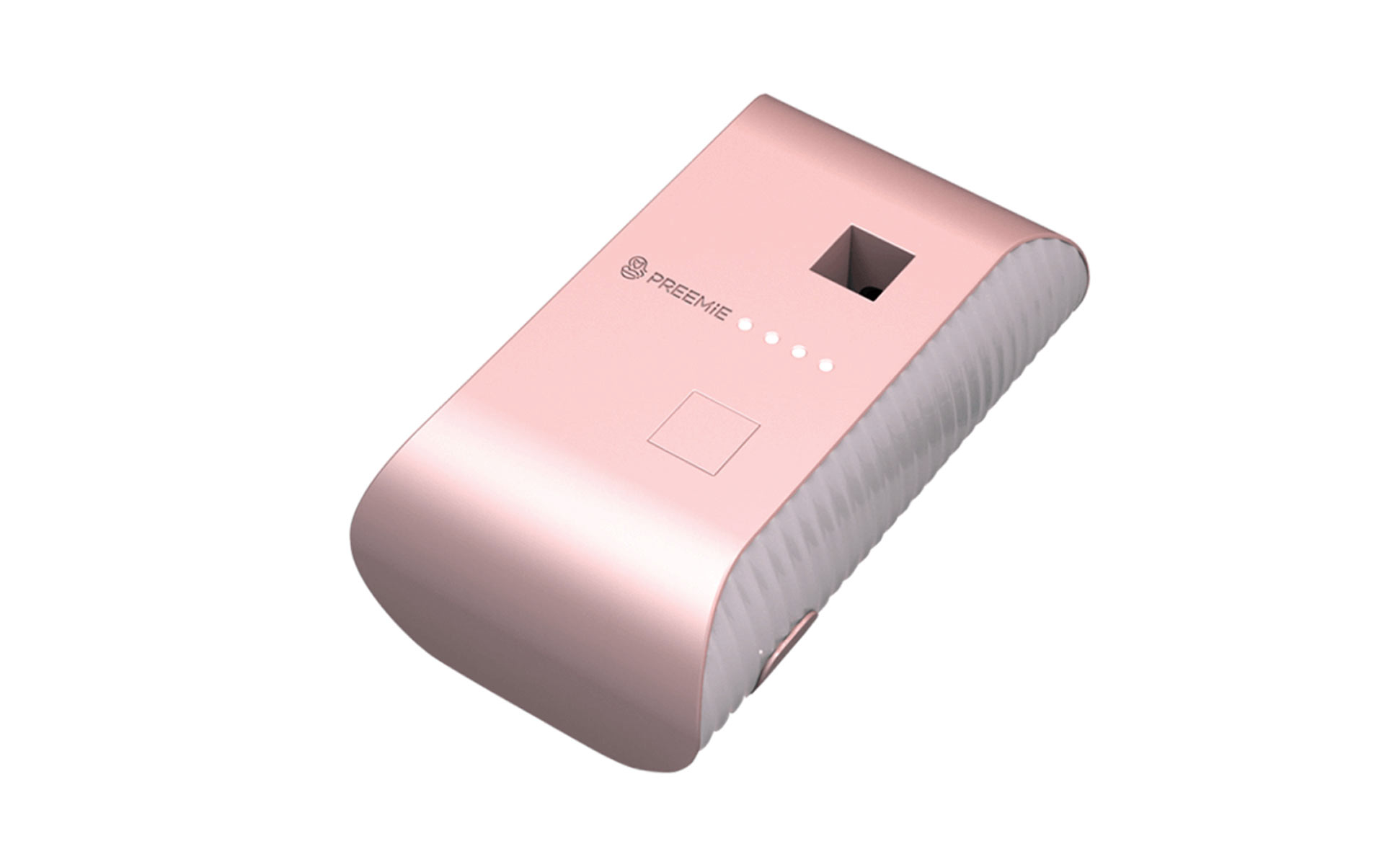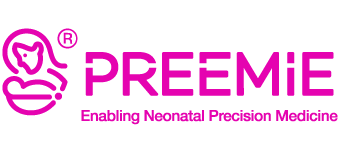The Future of Individualised Targeted Fortification and Why It Matters to Preemie Babies

Fortifying breast milk is not a ‘One Size Fits All’ solution. Today, we are looking towards the future of identifying your baby’s individual nutritional needs.
We believe that every preterm baby should be given the best chance to thrive in this world by fortifying the mother’s breast milk with additional nutrients. It is essential to identify the levels of nutrients in breast milk and determine what nutrients need to be added to provide the optimal source of food for your preemie baby.
Preemie is a handheld system designed with a Near-InfraRed (NIR) spectrometer supported by an Artificial Intelligence (AI) computation engine. The sensor analyzes the breast milk and enables neonatologists and pediatricians to analyze its composition and provides this information via our app. The app then lets doctors know the total amount of protein, lipids, carbs, lactose, Human Milk Oligosaccharides (HMOs), energy, water and the freshness of the breast milk. With this information, doctors are then able to make informed decisions to create a personalized nutritional formula to supplement breast milk.
Why is Individualised Targeted Fortification Important?

A mother’s breast milk is known to have the best nutrients and infection-fighting properties required for your baby, especially Human Milk Oligosaccharides, which are unique to human milk. However, for preterm babies, it can be challenging to meet the infant’s nutritional requirements and more often than not, requires the milk to be supplemented (fortified) with additional nutrients.
Most neonatal units today use a Standard Fortification method whereby a fixed amount of off-the-shelf multi-nutrient fortifier is added to breast milk. This product, typically a liquid or powder, is added to a given volume of breast milk to reach the required nutritional recommendation. However, we need to consider the following:
- That there is high variability in breast milk concerning macronutrients.
- This fixed amount is calculated based on the assumption that all human milk has a fixed protein content.
- The infant’s precise nutritional needs change with age and growth.
This ‘One Size Fits All’ approach does not account for the inconsistency in the amounts of protein and lipids within human milk and therefore can run the risk of overfeeding or underfeeding the preemie baby.
There MUST be a BETTER WAY! And there is 🙂
“Today, we are working towards enabling NICU professionals with the ability to perform quick and reliable analysis using a small amount of breast milk. The goal is to provide preterm infants with a better feeding solution by individualising the fortification added to the breast milk.” Remarked Professor of Pediatrics, Enrico Bertino, Director of the Neonatology Department at the University of Turin and President of the European Milk Bank Association (EMBA). “With the Preemie system, doctors will be able to quickly and easily determine what additional nutrients are required to reach optimal fortification of the infants’ personal nutritional needs. If the preterm infant is fed too much or too little of macronutrients supplement, it can hinder the health and growth of a preterm infant.”
Targeted fortification of human milk makes it possible to ‘Individualise’ the fortification of breast milk. The objective is to ensure that your baby receives the RIGHT AMOUNT of macronutrients to help your baby grow happy and healthy. Your preemie baby must receive these nutrients in the targeted amounts to avoid possible long-term effects of inadequate nutrition, such as:
Inadequate nutrition may result in:
- Impaired neurocognitive development.
- Long-term cardiovascular complications.
- Significantly lower bone mineral density.
Overnutrition may result in:
- Risk in later life of metabolic complications such as the increased risk of obesity and insulin resistance (diabetes).
- Possible kidney complications.
The Challenge
When preterm infants are born, they have additional nutritional needs compared to full-term infants. To address these requirements, Neonatal Intensive Care Unit (NICU) professionals typically add a standard amount of fortifier to human milk to increase the amount of nutrients present in the milk, particularly protein, which plays a crucial role in an infant’s neurological development.
Although this approach of standard fortification improves the infant’s overall nutrition, it does not take into account the natural variability of breast milk, which significantly fluctuates throughout the infant’s first month of life. The only way to ensure that an infant is receiving the right amount of nutrients is by analysing the composition of the breast milk, which can be:
- Expensive in both equipment and human resources.
- Time-consuming as samples need to be sent to labs for analysis.
- Wasteful of a large sample of breast milk.
The Preemie system addresses this challenge by providing a comprehensive solution developed explicitly for human milk singularities and disparities.
The Future of Preemie and How We Will Help Preemie Babies Thrive

Preemie disrupts the existing market by allowing NICUs and human milk banks to scan donor milk, automatically calculating individual fortification, as well as to test the authenticity of the milk. This is achieved by developing machine learning models from laboratory reference analysis of many samples of human milk.
We are unique in this space as our Preemie Sensor is rapid, affordable, portable, and minimises the human error of calculating fortification since it automatically suggests the fortification of the human milk based on the nutritional needs of each specific infant and the current composition of mother’s milk. Two primary features are:
Provides a complete analysis: Its single purpose is to test the composition of mother’s milk and suggest a fortification of this milk so as to meet the unique nutritional needs of her baby. For this reason, the sensor delivers a reliable analysis of human milk composition that goes beyond the basics. In addition to testing the standard macronutrients (protein, fat, and carbohydrates), Preemie also analyses total HMOs and the freshness of the milk and whether it was adulterated (e.g. diluted).
Easy to use: The healthcare provider just needs to put a few drops of milk into a cuvette, and insert it into the portable Preemie Sensor. This process requires only 30 uL of human milk, and takes less than 30 seconds to obtain the analysis.
Closing Thoughts
The nutrition received in the first few weeks of life are incredibly critical to preemie babies. It is a stressful time for mothers wondering if their newborn is receiving the nutrients their baby needs to thrive. Even with current standard fortification methods, there remains an uncertainty whether their child is receiving all the nutrients they need. By providing the solution of individualised targeted fortification designed to be personalised to meet the infants needs, doctors and mothers can have peace of mind knowing that their child is receiving the nutrition they need during this delicate time of their life.
Keep up-to-date on the latest news by following us on Facebook, Twitter and LinkedIn
About the Technology
Preemie is a handheld system composed of a Near-InfraRed (NIR) spectrometer (the sensor), an AI computation engine operating in the cloud, and a dedicated mobile application. The Preemie system tackles the problem of undernourishment in underweight infants by providing reliable analysis of human milk composition and information on how to fortify the milk to achieve personalised nutrition for the infant. Our Preemie system also correlates the growth of the infant with the detailed fortification given, thereby providing invaluable data to neonatologists and pediatricians on how to achieve optimal infant health.
This project has received funding from the European Union’s Horizon 2020 research and innovation programme under grant agreement No 879228
About Professor Enrico Bertino
Enrico Bertino is a Full Professor of Paediatrics at the University of Turin. He is currently the Director of the Neonatal Care Unit at Turin University, located in Sant’Anna Hospital, the largest European national health hub. He is also in charge of the clinical activities of the Donor Human Milk Bank in the hospital. As a reference center for high-risk pregnancies, very preterm and critical newborns, S. Anna hospital has overall more than 6,000 deliveries per year with more than 100 very low birth weight Infants per year.
He is President of the European Milk Bank Association from November 2018 and also a Founder Member of the Italian Association of Human Milk Banks and has authored over 250 scientific publications in international journals, mainly regarding neonatal nutrition and growth.
Professor Bertino specific interests include:
- Neonatal Nutrition and Metabolism
- Neonatal Intensive Care
- Breastfeeding Promotion
- Biological and Nutritional Aspects of Human Milk
- Follow-up of Preterm Infants
- Fetal and Postnatal Axiology
- Perinatal Health Care Quality
- Family-centred Care

